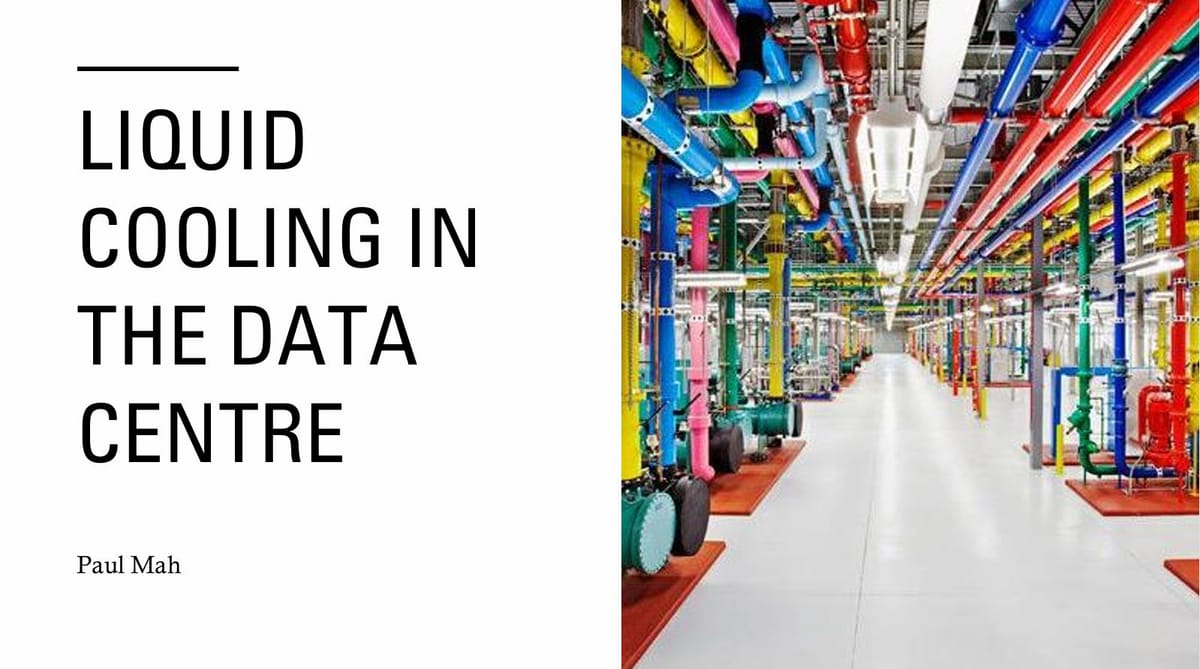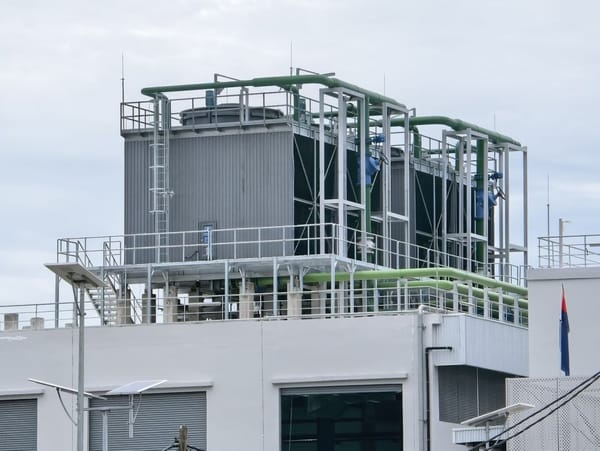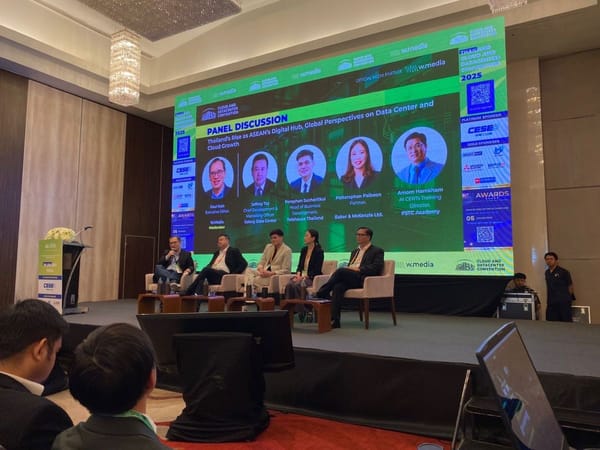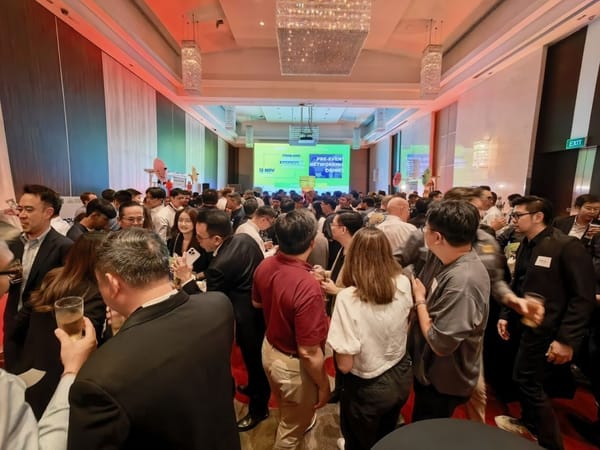Liquid cooling in the data centre
And the road ahead for liquid cooling.

Last month, I gave a private briefing to some investors about liquid cooling in the data centre. What's the road ahead for this technology?
For those curious about how liquid cooling works, I've attached a small section of the deck showing systems used in data centres today.
Understanding a data centre isn't difficult, though it sure can get confusing. Here's what I talked about.
Why liquid cooling, why now
Liquid cooling has been around for quite a while now. Why the sudden interest? One word: AI.
- Scaling laws suggested better AI with more GPUs.
- Justified ever-larger GPU deployments.
- No result. Then one day, AI worked.
The result?
Massive scale, powerful AI systems that must be cooled. And a liquid such as water can carry about 3,500 times more heat than the same volume of air. So liquid cooling it is.
Types of liquid cooling
The 3 key types of liquid cooling are:
- Rear Door Cooler (RDC) - Chiller water to each rack.
- Direct to chip (DTC) - Chilled water to CPUs/GPUs.
- Immersion cooling - Immersion in a liquid (not water).
You can check out my photos of the various liquid cooling solutions in the attached slides.
Key components
I highlighted some key components, and how they typically fit into a data centre.
- Cooling Tower.
- Chiller.
- CRAC.
- CDU:
(a) Liquid to liquid CDUs (Typically).
(b) Liquid to air CDUs. - Manifold.
Additional topics
I also talked about the following topics, though I capped it at just three of each due to time limitation.
(a) Myths and realities
(b) Challenges for data centre operators
What's next
Looking at data centres today, I do think two things will happen in the months and years ahead.
- AI data centres will diverge even further from those in traditional data centres. As noted at my fireside chat two weeks ago, this is already happening today with new, high-capacity systems designed for AI workloads.
- Inference hardware will start to increase. Some desktop and smartphone can already do some inferencing, but I will expect more inference-capable AI server chips to proliferate. Did you know: The China-only H20 is much stronger in AI inferencing than AI training?
Where do you see the data centre industry going?
PS: And yes, my presentations tend to be very graphical with few words.




